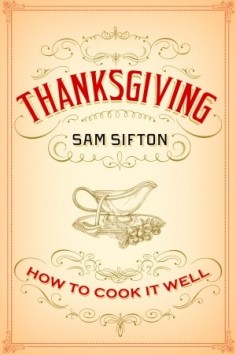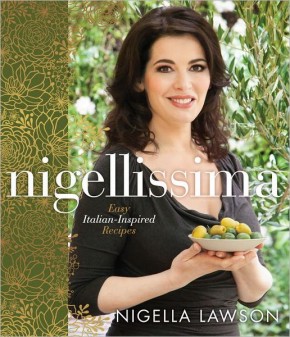RoadfoodThe Coast-to-Coast Guide to 900 of the Best Barbecue Joints, Lobster Shacks, Ice Cream Parlors, Highway Diners, and Much, Much More, now in its 9th edition
For the road warriors and armchair epicures, the updated ninth edition of Roadfood is your indispensable guide to more than 900 of America’s best local eateries—now with more than 200 completely new listings.
Explore the affordable, enjoyable, one-of-a-kind dining destinations along America’s roadways with this indispensable guide. In this fully revised edition, Jane and Michael Stern introduce the Roadfood Honor Roll—a tip sheet to the 100 must-visit stops—just in time for your next roadtrip, no matter what state you’re driving through. With up-to-date information on restaurants’ hours of operation, phone numbers, and websites, you will never go hungry on the road or get lost finding the best off-the-highway gems.
Jane and Michael Stern are the authors of more than twenty books about America. Their “Roadfood” column for Gourmet has won three James Beard Awards. Their Roadfood segments appear regularly on the Television Food Network, and their Web site, www.roadfood.com, was selected 2001 site of the year by Yahoo. Also regular contributors to NPR’s “The Splendid Table,” the Sterns live in West Redding, Connecticut.
Michael Stern
Jane and Michael Stern are the authors of more than twenty books about America. Together they wrote Roadfood one of the first book detailing and championing the quality and diversity of local American fare. Michael Stern recently spoke to Booksabaoutfood.com about the latest edition of this now classic book.
Booksaboutfood.com (BAF): For those who don’t know, how did this whole thing come about?
Michael Stern: Well, the 1st edition was published in 1978, which is another era in so many ways. Culinary speaking, it was another era because at the time, not too many people paid much attention to American regional food. I mean, some people did. What happened is Jane and I were actually on the road doing a book about long-haul truck drivers. Neither of us had traveled all that much. We’d occasionally eat in some cafe in Mississippi that had really delicious biscuits or barbecue in Texas or something like that. We would think, “Man, this is great! We need to find a guidebook that will direct us to where to eat great local food when we travel.” We looked and there wasn’t one, so when the trucker book was done, we looked at each other and said, “We need to do that book.” That was the 1st edition of “Roadfood.”
BAF: Don’t they say that if you want good food, ask a trucker?
Michael Stern: To some degree it’s true now. It used to be truer in the old days before the interstate highways. I mean, truckers today are pretty much prisoners of the interstate. If you’re driving along a big 18-wheeler, you can’t … both the size of the truck and time constraints just don’t allow you to travel the back roads. I mean, back before everyone traveled the highways, I think truckers did make a point of finding those mom and pop places where they could get a good meal at a reasonable price. In fact, when we started back in the 70’s a lot of our tips came from truck drivers.
Many of them were in the form of, “God, if I didn’t have my 18-wheeler with me, I would get off at that exit and ride around there.” There’s a little shack on the other side of town, but there’s no place to park the truck there anymore. A lot of tips in fact did come from truckers.
BAF: How did you go about collecting the original collection? Was it just the 2 of you just hitting the road?
Michael Stern: It was the 2 of us hitting the road, getting lost, asking everyone we could find about where to eat. One of the tricks we learned early on … it was the best trick in the world … not really a trick. One of the best techniques for finding great food was that if we knew we were going to any particular area, we would search our minds of trying to remember anyone that we know that used to live there. If we could think of somebody, we would ask that person. We’d call them and ask them, “If you went back to Tucson, what’s the first thing you’d eat? Where’s the first place you’d go?” Very often, that was a great clue to some unique restaurant or unique food that you couldn’t find anywhere else, but no, a lot of it was just hit and miss. As I said, in those days, there wasn’t a lot of attention paid to small town cafes and diners and drive-ins.
When we proposed the 1st edition of “Roadfood” to publishers, a lot of them said, “You can’t fill a book with interesting restaurants around America.” That was really the belief that if you were interested in good food, you had to be interested in French food, and that was what was interesting or maybe other European food. The idea that there was actually an interesting, thriving, healthy, colorful cuisine in America was something that not a lot of people even thought about in those days.
BAF: How has that changed today?
Michael Stern: Well, I think now you can’t turn on the television … I mean, when we started, we really felt like we were on a soapbox preaching to people, “You must pay attention to American food. It’s really interesting.” The first couple editions of “Roadfood” came out. We would go around to say, “Listen, there’s some really great food and you must pay attention to it.” Over the years, what’s happened is that partly because of us but party because of all kinds of other things happening in the food world, people have begun to pay attention to regional American food to the point where at this point, a lot of really wonderful little restaurants have … I don’t want to say have been ruined, but have been kind of overwhelmed by the attention, especially from television.
I mean, our book … we’ve talked to restaurateurs after they’ve appeared in our book, and some of them say, “Oh, it’s great. We have people coming through all summer because they read about us in the book and they wanted to try our mile-high lemon pie or whatever.” Just because of the nature of reading and books, it doesn’t have a dramatic effect, but when a restaurant appears on television on one of those popular shows, suddenly, it becomes overwhelmed. What happens is they kind of streamline the menu. They hire new help. It’s not the same place anymore. The regular customers that used to make it kind of a friendly, folksy place get sort of squeezed out by the people who want to come and eat what they saw the guy on TV eating.
In some ways, what we were preaching about and what we were hoping for has happened all too much. I mean, I don’t want to complain about it because I think fundamentally, it’s a great thing, that the fact is we Americans have put our culinary inferiority complex far behind us. I think most anyone who’s interested in food recognizes that American cuisine, while it’s very different than Cordon Bleu or any of the sort of canons of cooking in other countries, is like in this country kind of incredibly diverse and always changing and reflecting a population that’s always changing. I think that’s one of the things that makes it perpetually interesting.
BAF: What about the growth of fast food on the interstates? One would imagine that has only damaged the mom and pop places.
Michael Stern: To some degree it has. No question about it. I mean, we’ve seen a lot of mom and pop places go out of business because a Cracker Barrel opened up on the outskirts of town, and they just can’t compete, but not always. I think one of the things that … I mean, yes, that does happen and it’s terrible that it happens, but one of the things that’s happened sort of parallel to the growth of the monotony of fast food is that renaissance of interest in American food. What we have seen in the last 10 or 15 or maybe even 20 years is that a lot of restaurants that might have in the past gone out of business in fact get taken up by the next generation of the family that runs them. I mean, in the old days if you worked in a diner or in a pizza place, basically, you wanted you kids to get out of there and do something better.
Obviously, a lot of people still do, but I think a lot of people recognize that running a really good diner, running a really great regional-style pizza place or whatever it may be is actually a kind of valuable thing to do. It’s a valuable part of our culture, so I think as people have recognized regional food and diners and cafes and the interesting restaurants as something that we want to treasure, I think to some degree, that’s helped them stay in business. In fact, even open up. We’ve seen a lot of new places open up, serving from scratch local, regional food. I think it’s sort of a two-fold thing. On one hand, the fast food has hurt it. On the other hand, that rise in consciousness of Americans about our food has counteracted that to some degree.
BAF: The state of road food is still good it sounds like.
Michael Stern:Oh, very good. As I said, we’re amazed constantly at the brand new places that open up. In fact, tomorrow, I’m taking a guy coming to Connecticut who’s never been here before, and I’m taking him … one of our unique regional specialties in one little part of Connecticut is the steamed cheeseburger.
Well, there are a couple of old places that have been serving steamed cheeseburgers for decades, and so we’ll try 1 or 2 of those, but there are 2 places in that vicinity that have opened up in the last 3 years. I’ve been to both of them. They’re really good, and they’re really true to the tradition of steamed cheeseburger. One guy makes them a little bigger and offers more condiments, but it’s basically the same idea and it’s brand new. We’ve seen that all over the country, that in fact either that the appeal of regional food and the possibility of making a good living, making and serving it has increased to the degree that running one of these restaurants is an appealing thing to a lot of people.
BAF: Can that also be traced back somewhat to the success of TV, that because of TV people do see the value in these places and now instead of wanting the kids to go off to be lawyers or whatever, they want them to stay and be the center of town sort of thing.
Michael Stern: Exactly, because I mean, because I think what TV does is it … what’s the word? It legitimizes things, right or wrong. When something appears on TV, that makes it important to people, and I think it isn’t only television, but I think to a large degree, the proliferation of food on television has really helped that.
BAF: Are you still going on the road yourself?
Michael Stern: Oh, yes. Absolutely. In fact, I’m on my way to New Orleans at the end of the week, partly to explore Southern Louisiana, but also partly because we stage a Roadfood Festival down there where we invite regional cooks from all over the country to come down and cook very unique regional specialties, which is kind of fun. Introduce New Orleans people who are so food savvy to the great foods of Buffalo, New York; Tucson, Arizona, etc., etc.
BAF: Do you eventually make it a point of trying to get to all these places yourself?
Michael Stern: Yeah, the website, the reviews that bear my name I’ve been to on the website, but in “Roadfood” the book, we have been to every single place in the book, Jane and I have. In fact, I’ll tell you, early on in the very 1’st edition of “Roadfood” we thought, “Well, you know, one thing we can do is get stringers. We’ll get somebody to do the Pacific Northwest, and we’ll get somebody to do the Southwest and that’ll save us a lot of wear and tear.” In fact, we had a couple people write some reviews, and we read the reviews and then went out to the places. For better or for worse, we were too fussy. We wanted this book to be our voice, and in fact it is. It’s a very personable … these are places we really like. I think over time, many people who read the book have come to sort of know our tastes and know whether they trust it or maybe they trust our taste in barbecue but not in seafood or whatever. It is a very personal book, and every review in there was written by us, and every restaurant was visited by us.
We were the first website to actually have pictures of food, and now that’s everywhere too. When we first started it, we were the only people writing reviews, but what we’ve done is to try and open it up so that anyone really can contribute a review. We’ve got a restaurant review editor to make sure that the reviews are up to snuff. I just don’t have enough time or appetite to try every single place that gets reviewed on Roadfood, but I try my darnedest. If one seems especially wonderful, I will get to it without a doubt.
BAF: The reviews in the book, how are they different from the ones on the website?
Michael Stern: Well, there are ones in the book that do not appear on the website for various reasons. Maybe because there’s something too much like it on the website. Maybe because we just don’t have really good pictures of it, and one of the fundamental things that we want in every website review is good pictures. For one reason or another, my camera broke; I forgot my camera, whatever. I have no pictures, so that will appear in the book. Conversely, the space in the website is nearly infinite, so we can keep adding places. I mean, what we’ve done with each edition of Roadfood (the book) in order to make room for more … each edition has grown. I think the first edition had 400 restaurants. The new one has 900, but even to fit in 900, 200 of those are brand new.
We had to actually cut maybe 100 or 150 from the previous edition. Some we cut because they had gone out of business or had changed significantly or we returned to them and we didn’t like them as much, but others, we just had to cut because we hadn’t been there recently and we had to make room for some great new place that we found. It does differ. I mean, and the reviews, we try to make the reviews different as well. I mean, we don’t want people reading the same darn thing in both venues.
BAF: Have the two of you ever really been at complete odds about a restaurant?
Michael Stern: We’ve debated. On rare occasions, we will debate, but honestly … and this sounds ridiculous … but it’s never happened that one of us just loves, loves a place and the other hates it. I mean, there might be a few borderline places that I just adore, and Jane says, “All right. I don’t really adore it, but if you love it, I’ll put it in.” I mean, we’re sort of more inclusive than exclusive in that sense, but one of the reasons we’ve been able to work together for some 40 years is that our taste in food and restaurants is very parallel. You know how people who work together can finish each other’s sentences, I mean, our taste in food is very much that way. I mean, we’ll walk into a place and we’ll notice the same stuff. We’ll read the menu in the same way. We’ll eavesdrop on the same conversations going on around us. I mean, we’ve learned to … yeah, it’s something that we share very much, so in fact, that kind of monumental disagreement has never really been an issue.
BAF: There is a certain romance to the idea of just driving off into and finding these places.
Michael Stern: Yeah, I mean, it’s a great American rite of passage. I mean, even before Jack Kerouac did “On the Road,” I mean, sort of hitting the road in this country, going back to western migration has just been something that we Americans love to do. In fact, Jane and I hit the road to do that trucker book after getting very fancy graduate degrees from Yale and Columbia. Needless to say, our parents at the time who’d paid a lot of money for us to get these degrees were delighted that we said, “Well, we’ll put off getting a job. We’re just going to travel around the country and see what’s going on.” And there is to this day, as much as we have done it, especially when we’re in a beautiful part of the country or we come across some new restaurant that is just wonderful and delightful and charming and the food is good and the people are nice. We think, “Man, this is heaven. What could be better than this?”
It’s funny because we travel so much that we’re the type of people that when we’re home we get very antsy to travel, and then when we’re on the road after a while, we get very antsy to get back home, so it’s constantly back and forth. There is something fun and exciting about hitting the road and exploring it, and especially when you don’t know exactly what you’re going to find. We often have an itinerary when we set out, but just as often, we veer away from it because somebody told us about some place we needed to check out somewhere.
BAF: Over the years you must have had your favorite spots here and there. I’d imagine some of them must have closed. And that can be a bit like losing an old friend.
Michael Stern: I know, and it’s terrible when that happens, especially when it’s one of those restaurants that’s been around forever and it’s just sort of a pillar of one’s sense of what the food scene is like. That does happen for one reason or another. It’s sad and shocking when it does. There used to be a place in Nashville called Haptowns. It was a little cafeteria, tiny cafeteria. Haptowns would make these wonderful I mean, real southern cooking. He would sort of stand behind the counter and croon about how good everything was. He had been there for 30 years. Before him, his father had run a lunch wagon there, so the name Haptowns was just part of the Nashville food scene. He was in maybe our 1st couple or 3 editions of “Roadfood.” Actually, we became friends with him, and we got a note saying, “Well, I’m hanging up my apron and I’m done.”
He actually in fact sold it to somebody else who tried valiantly to keep it up, but as good at the new guy’s intentions were, this place was really all about Haptowns, and his personality just infused the place in a way that even copying the recipes couldn’t duplicate.
BAF: In many of these places, the food’s good or great, but so much of it is the spirit of the place, of the owners, of their family, what they put into it.
Michael Stern: Without a doubt. Without a doubt. One of the places we’re going to tomorrow after we do our steamed cheeseburger expedition is the guy has never really had Connecticut-style pizza, which is really excellent in my opinion. It’ s Neapolitan style, but it’s somewhat different than what you get in New York or New Jersey, which also has good Neapolitan-style pizza. One of the places we’re going to is a somewhat lesser-known pizzeria than the famous ones in New Haven called Zuppardi’s, which actually eluded us for the 1st 5 or 6 editions of “Roads.” We’d never heard of it even though we went to school in New Haven and had explored the food in and around New Haven. We had never heard of this place called Zuppardi’s, which is on Main Street in West Haven. It’s a little family-run place that’s been there since the 30s, and sure enough, you cannot go into that place without at least 2 or 3 members of the Zuppardi Family being there.
The quality control is unbelievable, and just the spirit of the place. They’re there. They’ll behind the counter. They and their friends will be sitting at one of the booths. You can’t walk in without somehow getting involved in this. It’s like a big family picnic all the time. That place wouldn’t be Zuppardi’s without those people. Even if the food was exactly the same, it would be a completely different experience.
BAF: What else is in the works?
Michael Stern: We’re going to be heading to the southern Midwest, southern Indiana, southern Illinois, southern Ohio along the Ohio river there. Then over into Kentucky and Tennessee. We just haven’t been there in a while, and we wanted to sort of see what was going on and explore there. Beyond that, I don’t know. We’ll just have to see what’s alluring, what’s tempting, what we feel we haven’t paid enough attention to recently. I mean, that’s sort of the way it always is.
Booksaboutfood.com © 2014
“The bible for motorists seeking mouthwatering barbecue or homemade pie.”
—USA Today
— Newsweek magazine











Leave a Reply